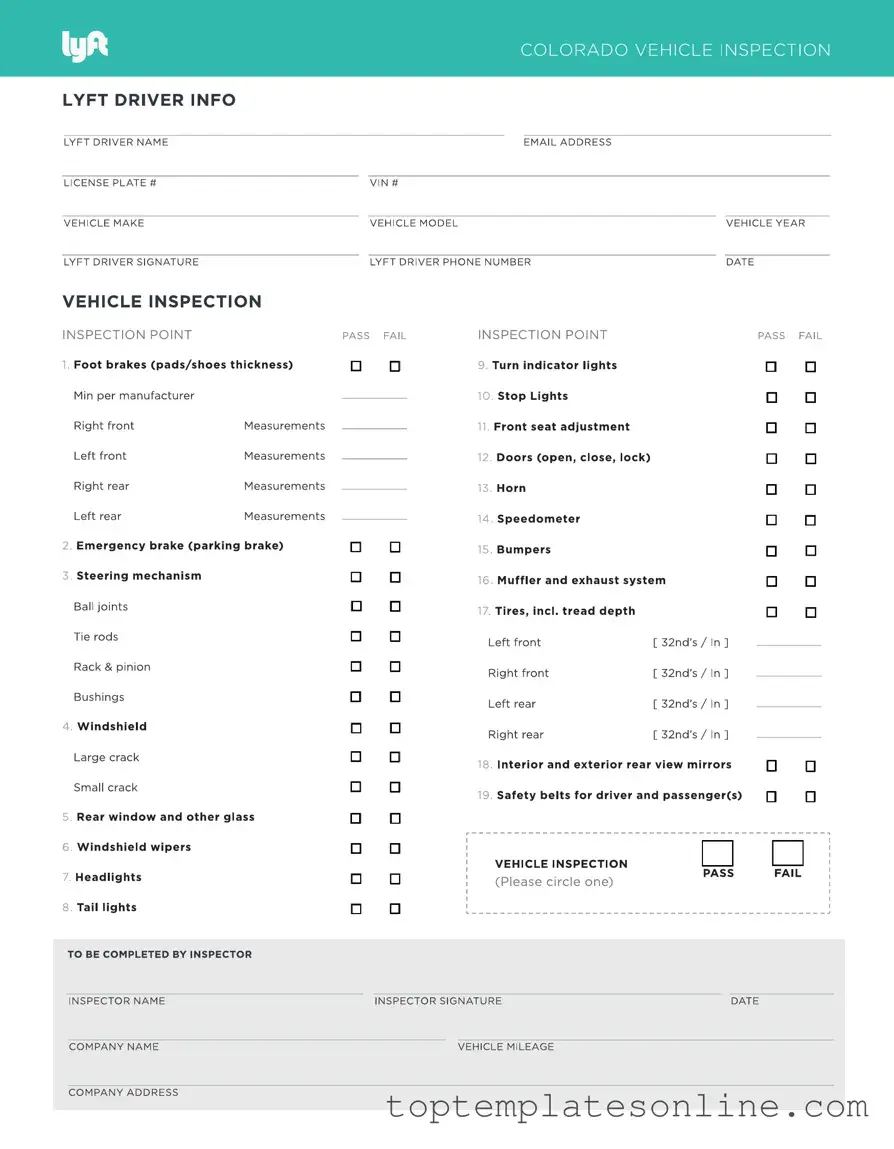Fillable Lyft Inspection Form
The Lyft Inspection Form is a crucial document that ensures vehicles meet safety and operational standards before they can be used for ridesharing. This form is designed to protect both drivers and passengers by verifying that cars are in good condition and compliant with local regulations. Understanding how to complete this form correctly is essential for anyone looking to drive for Lyft.
Customize Lyft Inspection Here
